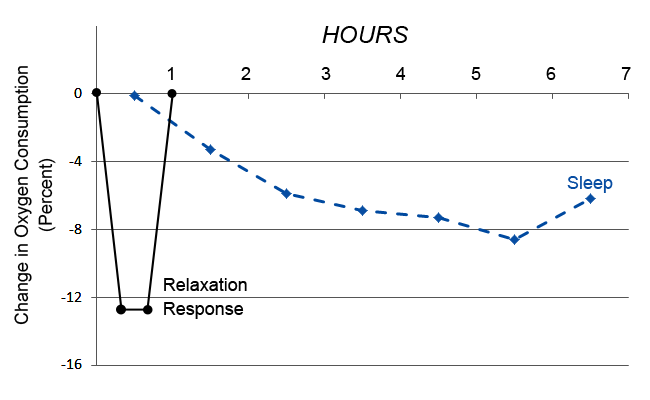As a young cardiologist in the 1960s, Dr. Herbert Bensen noticed a trend among his patients that suggested a link between stress and hypertension, a precursor for heart disease. Many exhibited falsely high blood pressure at the doctor’s office. His colleagues routinely dismissed the phenomenon, ascribing the elevated readings to nerves. But the experience stimulated his curiosity.
If the body has a built-in mechanism to make adjustments physiologically in response to stress, might it also have a mechanism to calm itself down?
Bensen left private practice and joined the faculty of his alma mater, the Harvard Medical School, to answer that question.
Bensen confirmed his hypothesis through studies conducted with practitioners of Transcendental Meditation. He dubbed the phenomenon The Relaxation Response and authored a best-selling book by that name. Here were his findings.
When subjects entered a meditative state, they exhibited lowered heart rate, respiration, and oxygen consumption. The latter indicated that the body’s energy resources had been given a break, since cells consume oxygen when metabolizing sugars and fats for fuel. Meditation also produced a marked decrease in blood lactate, suggesting an anti-anxiety influence. Taken together, these metrics speak to decreased activity of the sympathetic nervous system and reflect a state of deep restfulness. In short, it’s the antithesis of the fight-or-flight response!
Bensen also demonstrated that the physiological impact of meditation is distinct from sleeping. During sleep, oxygen consumption decreases progressively to about 8% less than wakefulness. By contrast, mediation induces a rapid decrease in oxygen consumption within the first 3 minutes of practice and resets to normal at the end of a session. Alpha brain waves manifest prominently during meditation but are not common in sleep. Meditation does not induce Rapid Eye Movement (REM) sleep.
In sum: If you need a break from stress, meditate!
Since the 1975 publication of Bensen’s book, meditation has gone from a quasi-cult phenomenon to a mainstream practice with scads of research to supports its efficacy. There are lots of techniques for evoking the relaxation response and varying price tags associated with learning them. Bensen advocates a straight-forward approach that anyone can implement:
- Pick a focus word, short phrase, sound, or prayer that carries meaning within your belief system.
- Sit quietly in a comfortable position.
- Close your eyes.
- Engage in progressive muscle relaxation to relieve tension in the body, starting with the muscles in the feet and toes and working up through the calves, thighs, abdomen, arms, shoulders, head, and neck.
- Breathe in slowly and naturally; say your focus word, phrase, sound, or prayer to yourself as you slowly exhale.
- Take note when other thoughts attempt to intrude on your session and simply let them go. Gently return to your practice without judgment or concern no matter how many times this happens.
- Continue for 10-20 minutes.
- Sit quietly for a couple of minutes as you prepare to move forward with the affairs of the day. Open your eyes and wait for another minute or two before rising.
- Meditate once or twice daily. Good times for practice include just before breakfast and just before dinner.
